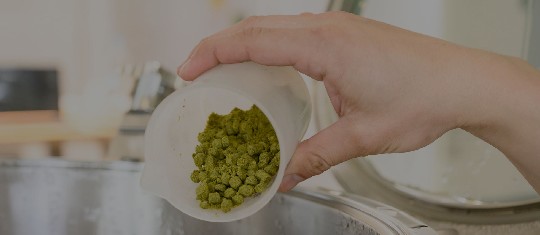What is dry hopping? Where does it originate? Our product development expert Mark Zunkel answers these questions and more.
What is dry hopping?
In dry hopping, the hops are added to the beer only after its main fermentation. Depending on the frequency of dry hopping and the timing, this results in very different hop aromas. By the way, the term "dry hopping" is derived from the fact that usually, dried hops are used.
How does dry hopping work?
There are different techniques for dry hopping. Often, the choice of technique depends on the type and size of the brewery. In a home or small brewery, the hops are usually placed into a cloth bag and suspended in the green beer. Alternatively, dynamic dosing can be used. This is the method used by most larger breweries. Here, hop pellets are placed into vessels through which the beer is then pumped. Depending on how long and often the beer is dry hopped, the green beer can be bottled after hop removal.
What speeds up the dry hopping?
- The higher the temperature, the faster the dry-hopping process is completed (for example, at 20°). However, different dry hopping temperatures also lead to different aroma and flavor outcomes.
- The more easily the hop pellets disperse, the better the aroma extraction.
- Agitation. Pumping the beer keeps the pellets in suspension and prevents them from sinking to the bottom as quickly.
What is the origin of dry hopping?
Dry hopping has been used in brewing for several hundred years and became more widely used in Great Britain in cask ales the 18th century.
Does dry hopping increase beer bitterness?
When dry hopping with pellets, oxidized iso alpha acids (humulinones) will be extracted into the beer, increasing the overall bitterness. Compared to iso alpha acids, humulinones have a slightly lower sensory bitterness intensity, by a factor of approximately 0.6. In highly hopped beers, iso alpha acids can also adsorb onto the pellet hop material removing them from the beer. Dry hopping with pellets can therefore increase or lower the bitterness of the beer or change its bitter quality, depending on hopping rates.
Hop oil products, such as PHAs do not contain any hop acids and do not have any impact on beer bitterness.
Is there an ideal timepoint for dry hopping non-alcoholic or low-alcohol beer?
We have had good experiences with using specialized yeasts that do not produce any alcohol and dry hopping towards the end of fermentation. This delivers intense dry hop aromas.
Do you have a question about dry hopping? Feel free to leave us a comment, or contact us at brewingsolutions@barthhaas.de.


